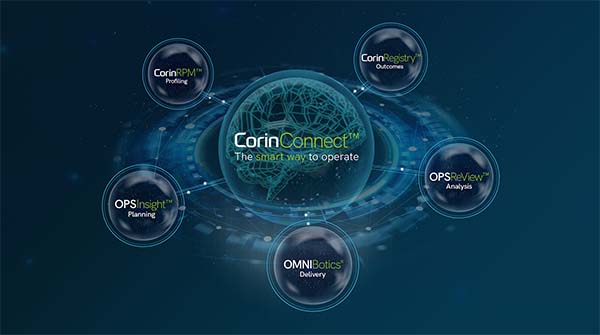

 Copy to clipboard
Copy to clipboard 
Device companies are prioritizing supply chain alignment to achieve company vision, leverage expertise and obtain significant cost savings. In order to accomplish these objectives, executives need to rely on their purchasing and sourcing teams.
For insight we turned to Jeoff Burris and Ken Jones, two thought leaders who don’t have a hard time spotting great supply chain professionals. The two have dedicated their careers to educating industry and students on ways to harness the power of the supply base in order to enhance individual and company performance. A defining trait in the best of the best is an ability to work cross-functionally within one’s company and through one’s supply chain partners to meet the objectives identified by leadership. It’s observed by actions and acumen.
That depth of knowledge takes time to obtain, but it is achievable. Burris, Founder and Principal of Advanced Purchasing Dynamics, and Jones, Director of Education and Applied Solutions, Center for Integrated Supply Management Western Michigan University, will lead an OMTEC workshop to teach OEM and supplier attendees techniques and tools to enrich internal and supplier relationships, as well as facilitate conversations about how companies within the supply chain can work together to move the industry forward.
In preparation for the workshop, we interviewed Mr. Burris and Mr. Jones, asking them to share the basic principles that their clients often overlook. Their insight, it turns out, can be applied to most aspects of business. We share the conversation with the expectation that it will inspire you with ideas for individual or team improvement.
ORTHOKNOW: The work of a purchasing team is never finished, is it?
Burris: No, because a procurement team that is delivering understands what the company’s objectives are and where the company is going strategically, and they’re bringing the supply base along with them. For most companies, a CEO can’t implement his vision for the company—whether that is to launch new products or to move into different geographic regions—unless the supply chain comes along. So, supply chain professionals need to adapt to the company’s needs and the company’s strategic direction, and they need to make sure that the way they work with their suppliers—and who their suppliers are and what their suppliers are delivering—adapts with the changing vision of the company.
ORTHOKNOW: Building off of that, in what areas do you consistently find purchasing teams/companies need to focus improvements?
Burris: One area would be a team effort, where purchasing is working with sales or working with operations in true cross-functional harmony to deliver what the company needs. Too often, we find organizations become siloed with purchasing, engineering and operations all trying to deliver their own objectives and not working as efficiently as possible. So, purchasing should consider what sales is trying to deliver and work to help sales deliver those objectives. Same thing with engineering; they should be assisting with ops. And those teams should help purchasing achieve their objectives. The cross-functional collaboration is lacking.
ORTHOKNOW: That’s a great point. We continue to hear that companies seek to break down departmental silos and build alignment. The success rate varies. When companies open themselves to this collaboration, what can be learned from purchasing? What should purchasing seek to learn from other departments?
Burris: Purchasing brings the knowledge of the supply base into play. If you’re working effectively with your supply base to develop new products, the supply base understands manufacturing capabilities and may even understand design capabilities. You should leverage that knowledge and become smarter than you are on your own as a company. To me, that’s the biggest thing: using the supply base as an additional company resource, with additional pools of knowledge to offer support.
Purchasing professionals who excel through their career are good about asking sales what it takes to satisfy a customer—and thus, they learn the sales perspective. The same is true with engineering. Sit down with engineering and learn why tolerances on a print or a design are so tight. Then, when a supplier comments, ”Jeez, these tolerances are so tight,” you can explain why they’re necessary and what they bring from a customer perspective. In the process of doing that, buyers become much smarter and more valuable to their employers.
Jones: If the purchasing group is using best practices, they’re going to have a continuum of relationships with suppliers: some will be basic, transactional providers of goods and services, but certainly as you get into more relationship-based suppliers, more will become preferred suppliers, those that are Vested and aligned with what your company is trying to do. You’re the advocate for the supplier. You’re the one bringing all of their capability to bear on your new product introductions, your new service models. You have to integrate them as part of the cross-functional team. They have to become an extension of your organization. Companies that are doing that incredibly well are the leaders in industry. The Procter & Gambles and Apples of the world are doing a better job of integrating suppliers into their businesses, getting their company goals and objectives aligned with the customer’s. I think that is inherent to purchasing.
Purchasing professionals would benefit from learning engineering orientation, process orientation—a better understanding of how things work and information should flow. Critical thinking. Problem solving. Those are nicely addressed in an engineering approach to the world. You’re seeing more high-level purchasing people come from that technical orientation, and not financing or marketing. There are few organizations that develop purchasing talent in that way. Even in the academic space that I’m in, few universities emphasize this. It shouldn’t be, “Let’s have a class on negotiation; let’s have a class on contract writing.” No. Let’s have a class on process reengineering. Let’s have a class on how to technically attack a problem and use Six Sigma tools. That’s where we need to go next to deal with the complexities that confront us today.
ORTHOKNOW: Thinking of relationships outside of the company, a priority for OEMs is improving relationships with suppliers. This can be difficult in an industry that faces continual price pressure, regulatory scrutiny and vendor consolidation. Where do you start with relationship building?
Burris: If you try to have deep relationships with all of your suppliers, you’re going to have mediocre relationships with all of them. My idea of relationships are, who are the suppliers who are critical to support the company vision, whether that be cost reduction, new products and innovation or operational excellence. That’s where you start building relationships. In building those, you need to understand your company interests and suppliers’ interests to see if there’s a good marriage. If your suppliers seek to develop the most innovative products in the world and your company is interested in the lowest-cost products in the world, it’s going to be hard to have a good relationship because the mutual interest isn’t there. Find those suppliers who have the same interest. Where it’s possible to develop a deep relationship, prioritize and select those suppliers.
Jones: There is no currency for relationships. There is no currency for trust. What’s an appropriate level of trust? Every company needs to perform a self-evaluation of what they stand for. What do they have to offer the supply base community? How can they best leverage their strengths, and how can they work around their weaknesses?
We also need a framework to evaluate how we should relate to every single type of supplier. One thing I’m going to cover at OMTEC is what I’ve found to be well-thought-out research that has been done by the University of Tennessee. It’s basically a sourcing continuum model that says, even if the supplier is a transactional supplier, there is a better way to interact and optimize your relationship with them. Vested spells out what that model looks like, what’s the scope of work, how you manage their performance, what’s the priority on pricing vs. other variables, what does the governance model look like. Understanding your company and having evolved frameworks to guide a purchasing group in a tough industry will go a long way.
ORTHOKNOW: In working with you to craft this workshop, I firmly believe anyone working within the supply chain could attend and walk away much smarter. What do you want attendees to take away?
Jones: We’ll provide tools and templates, but the real value is in the discussion and how they apply their unique situation to those tools and templates. They can leave this workshop with a better understanding of what best practices look like and what it’s becoming, as well as a roadmap that says, “Wow, I got work done that can help me when I go back to the office.”
This article originally appeared in BONEZONE®.
Device companies are prioritizing supply chain alignment to achieve company vision, leverage expertise and obtain significant cost savings. In order to accomplish these objectives, executives need to rely on their purchasing and sourcing teams.
For insight we turned to Jeoff Burris and Ken Jones, two thought leaders who don’t have a hard time...
Device companies are prioritizing supply chain alignment to achieve company vision, leverage expertise and obtain significant cost savings. In order to accomplish these objectives, executives need to rely on their purchasing and sourcing teams.
For insight we turned to Jeoff Burris and Ken Jones, two thought leaders who don’t have a hard time spotting great supply chain professionals. The two have dedicated their careers to educating industry and students on ways to harness the power of the supply base in order to enhance individual and company performance. A defining trait in the best of the best is an ability to work cross-functionally within one’s company and through one’s supply chain partners to meet the objectives identified by leadership. It’s observed by actions and acumen.
That depth of knowledge takes time to obtain, but it is achievable. Burris, Founder and Principal of Advanced Purchasing Dynamics, and Jones, Director of Education and Applied Solutions, Center for Integrated Supply Management Western Michigan University, will lead an OMTEC workshop to teach OEM and supplier attendees techniques and tools to enrich internal and supplier relationships, as well as facilitate conversations about how companies within the supply chain can work together to move the industry forward.
In preparation for the workshop, we interviewed Mr. Burris and Mr. Jones, asking them to share the basic principles that their clients often overlook. Their insight, it turns out, can be applied to most aspects of business. We share the conversation with the expectation that it will inspire you with ideas for individual or team improvement.
ORTHOKNOW: The work of a purchasing team is never finished, is it?
Burris: No, because a procurement team that is delivering understands what the company’s objectives are and where the company is going strategically, and they’re bringing the supply base along with them. For most companies, a CEO can’t implement his vision for the company—whether that is to launch new products or to move into different geographic regions—unless the supply chain comes along. So, supply chain professionals need to adapt to the company’s needs and the company’s strategic direction, and they need to make sure that the way they work with their suppliers—and who their suppliers are and what their suppliers are delivering—adapts with the changing vision of the company.
ORTHOKNOW: Building off of that, in what areas do you consistently find purchasing teams/companies need to focus improvements?
Burris: One area would be a team effort, where purchasing is working with sales or working with operations in true cross-functional harmony to deliver what the company needs. Too often, we find organizations become siloed with purchasing, engineering and operations all trying to deliver their own objectives and not working as efficiently as possible. So, purchasing should consider what sales is trying to deliver and work to help sales deliver those objectives. Same thing with engineering; they should be assisting with ops. And those teams should help purchasing achieve their objectives. The cross-functional collaboration is lacking.
ORTHOKNOW: That’s a great point. We continue to hear that companies seek to break down departmental silos and build alignment. The success rate varies. When companies open themselves to this collaboration, what can be learned from purchasing? What should purchasing seek to learn from other departments?
Burris: Purchasing brings the knowledge of the supply base into play. If you’re working effectively with your supply base to develop new products, the supply base understands manufacturing capabilities and may even understand design capabilities. You should leverage that knowledge and become smarter than you are on your own as a company. To me, that’s the biggest thing: using the supply base as an additional company resource, with additional pools of knowledge to offer support.
Purchasing professionals who excel through their career are good about asking sales what it takes to satisfy a customer—and thus, they learn the sales perspective. The same is true with engineering. Sit down with engineering and learn why tolerances on a print or a design are so tight. Then, when a supplier comments, ”Jeez, these tolerances are so tight,” you can explain why they’re necessary and what they bring from a customer perspective. In the process of doing that, buyers become much smarter and more valuable to their employers.
Jones: If the purchasing group is using best practices, they’re going to have a continuum of relationships with suppliers: some will be basic, transactional providers of goods and services, but certainly as you get into more relationship-based suppliers, more will become preferred suppliers, those that are Vested and aligned with what your company is trying to do. You’re the advocate for the supplier. You’re the one bringing all of their capability to bear on your new product introductions, your new service models. You have to integrate them as part of the cross-functional team. They have to become an extension of your organization. Companies that are doing that incredibly well are the leaders in industry. The Procter & Gambles and Apples of the world are doing a better job of integrating suppliers into their businesses, getting their company goals and objectives aligned with the customer’s. I think that is inherent to purchasing.
Purchasing professionals would benefit from learning engineering orientation, process orientation—a better understanding of how things work and information should flow. Critical thinking. Problem solving. Those are nicely addressed in an engineering approach to the world. You’re seeing more high-level purchasing people come from that technical orientation, and not financing or marketing. There are few organizations that develop purchasing talent in that way. Even in the academic space that I’m in, few universities emphasize this. It shouldn’t be, “Let’s have a class on negotiation; let’s have a class on contract writing.” No. Let’s have a class on process reengineering. Let’s have a class on how to technically attack a problem and use Six Sigma tools. That’s where we need to go next to deal with the complexities that confront us today.
ORTHOKNOW: Thinking of relationships outside of the company, a priority for OEMs is improving relationships with suppliers. This can be difficult in an industry that faces continual price pressure, regulatory scrutiny and vendor consolidation. Where do you start with relationship building?
Burris: If you try to have deep relationships with all of your suppliers, you’re going to have mediocre relationships with all of them. My idea of relationships are, who are the suppliers who are critical to support the company vision, whether that be cost reduction, new products and innovation or operational excellence. That’s where you start building relationships. In building those, you need to understand your company interests and suppliers’ interests to see if there’s a good marriage. If your suppliers seek to develop the most innovative products in the world and your company is interested in the lowest-cost products in the world, it’s going to be hard to have a good relationship because the mutual interest isn’t there. Find those suppliers who have the same interest. Where it’s possible to develop a deep relationship, prioritize and select those suppliers.
Jones: There is no currency for relationships. There is no currency for trust. What’s an appropriate level of trust? Every company needs to perform a self-evaluation of what they stand for. What do they have to offer the supply base community? How can they best leverage their strengths, and how can they work around their weaknesses?
We also need a framework to evaluate how we should relate to every single type of supplier. One thing I’m going to cover at OMTEC is what I’ve found to be well-thought-out research that has been done by the University of Tennessee. It’s basically a sourcing continuum model that says, even if the supplier is a transactional supplier, there is a better way to interact and optimize your relationship with them. Vested spells out what that model looks like, what’s the scope of work, how you manage their performance, what’s the priority on pricing vs. other variables, what does the governance model look like. Understanding your company and having evolved frameworks to guide a purchasing group in a tough industry will go a long way.
ORTHOKNOW: In working with you to craft this workshop, I firmly believe anyone working within the supply chain could attend and walk away much smarter. What do you want attendees to take away?
Jones: We’ll provide tools and templates, but the real value is in the discussion and how they apply their unique situation to those tools and templates. They can leave this workshop with a better understanding of what best practices look like and what it’s becoming, as well as a roadmap that says, “Wow, I got work done that can help me when I go back to the office.”
This article originally appeared in BONEZONE®.

You are out of free articles for this month
Subscribe as a Guest for $0 and unlock a total of 5 articles per month.
You are out of five articles for this month
Subscribe as an Executive Member for access to unlimited articles, THE ORTHOPAEDIC INDUSTRY ANNUAL REPORT and more.
CL
Carolyn LaWell is ORTHOWORLD's Chief Content Officer. She joined ORTHOWORLD in 2012 to oversee its editorial and industry education. She previously served in editor roles at B2B magazines and newspapers.







